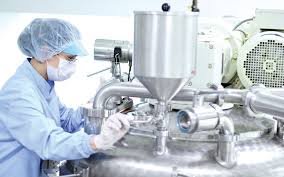Sampling in Cleaning Validation in Pharmaceutical Industry

Sampling in Cleaning Validation in Pharmaceutical Industry
Introduction
Cleaning validation is a critical part of pharmaceutical manufacturing, ensuring that residues of products, cleaning agents, and microbial contaminants are effectively removed to avoid cross-contamination. Sampling methods play a key role in verifying the cleanliness of equipment and facilities.
Types of Sampling Methods
-
Direct Surface Sampling (Swab/Rinse Wipe Sampling)
-
Involves physically wiping a known surface area using sterile swabs.
-
Commonly used for hard-to-reach areas and equipment parts.
-
Provides localized contamination data.
-
Requires validated swabbing technique, solvent selection, and recovery studies.
-
-
Indirect Sampling (Rinse Sampling)
-
Uses rinse solutions (e.g., WFI, suitable solvents) to collect residues from equipment surfaces.
-
Useful for complex equipment (tanks, pipes, pumps) where swabbing is impractical.
-
Provides an overall picture of cleanliness but less precise than swabbing.
-
-
Placebo Sampling
-
Running placebo batches through equipment to detect carryover.
-
Helps identify residues not easily captured by swabbing or rinsing.
-
Factors Affecting Sampling
-
Sampling location (worst-case areas: dead legs, corners, valves, gaskets).
-
Recovery efficiency of swab/rinse method.
-
Choice of solvent (depending on solubility of residues).
-
Surface material (stainless steel, glass, plastic).
-
Analyst training and technique.
Acceptance Criteria
-
Based on toxicological data (PDE / ADE).
-
Limit per surface area (e.g., µg/cm²).
-
Limit per next batch (carryover limit).
-
Visually clean standard (no visible residue).
Best Practices
-
Identify worst-case locations through risk assessment.
-
Use validated swabbing and rinsing techniques.
-
Perform recovery studies for each product and equipment type.
-
Rotate sampling locations periodically.
-
Document and trend results as part of the cleaning validation lifecycle.
🎓 Discover one of the best Pharmaceutical Quality Assurance course available —click below to explore the course that’s shaping future Quality Assurance skills.
https://trcjw.on-app.in/app/oc/306166/trcjw

